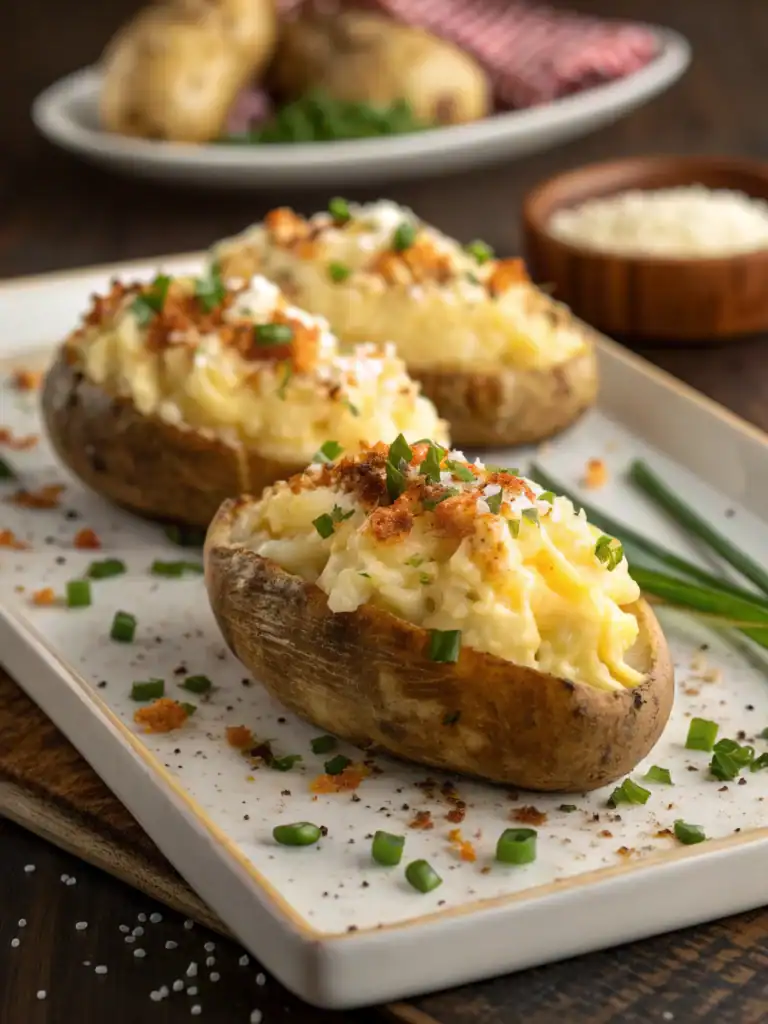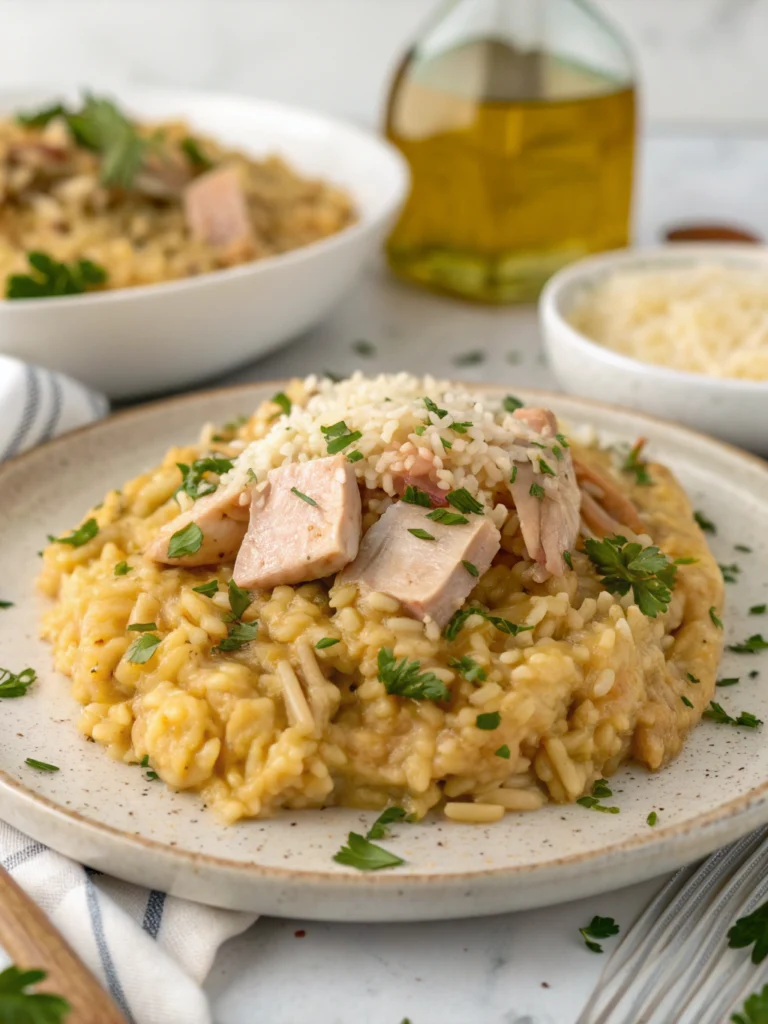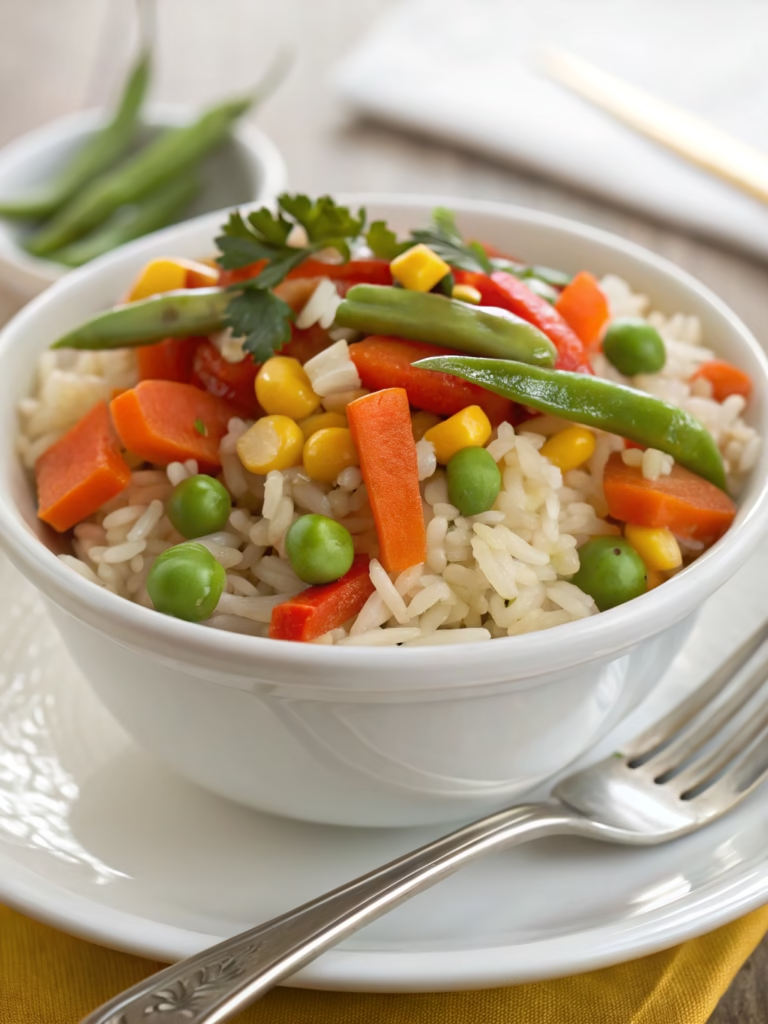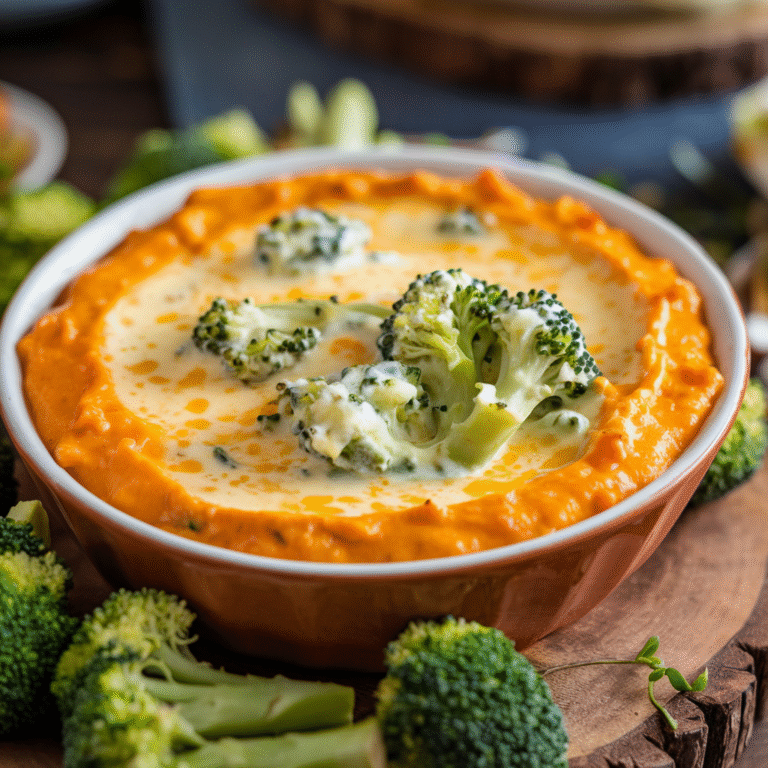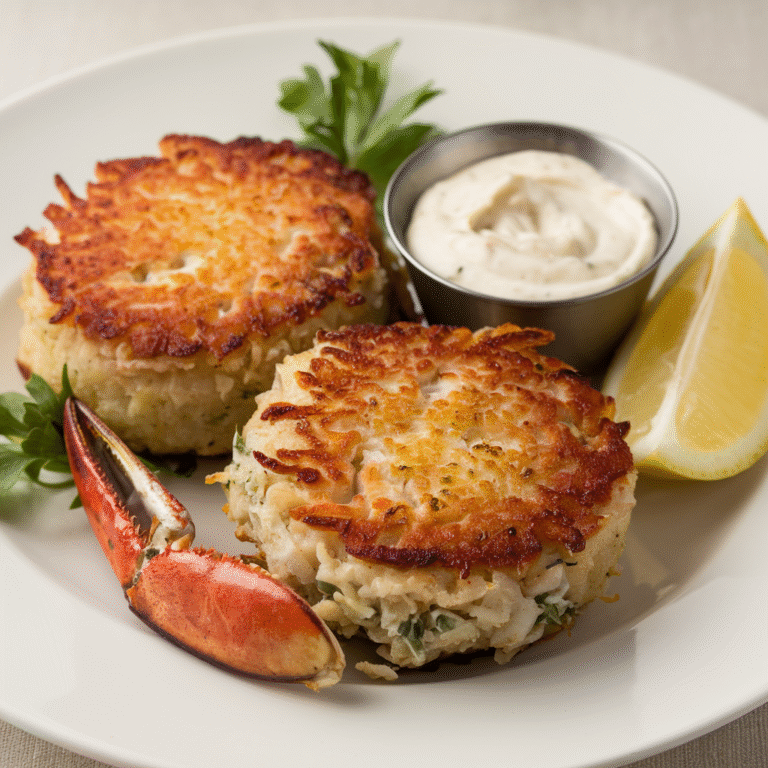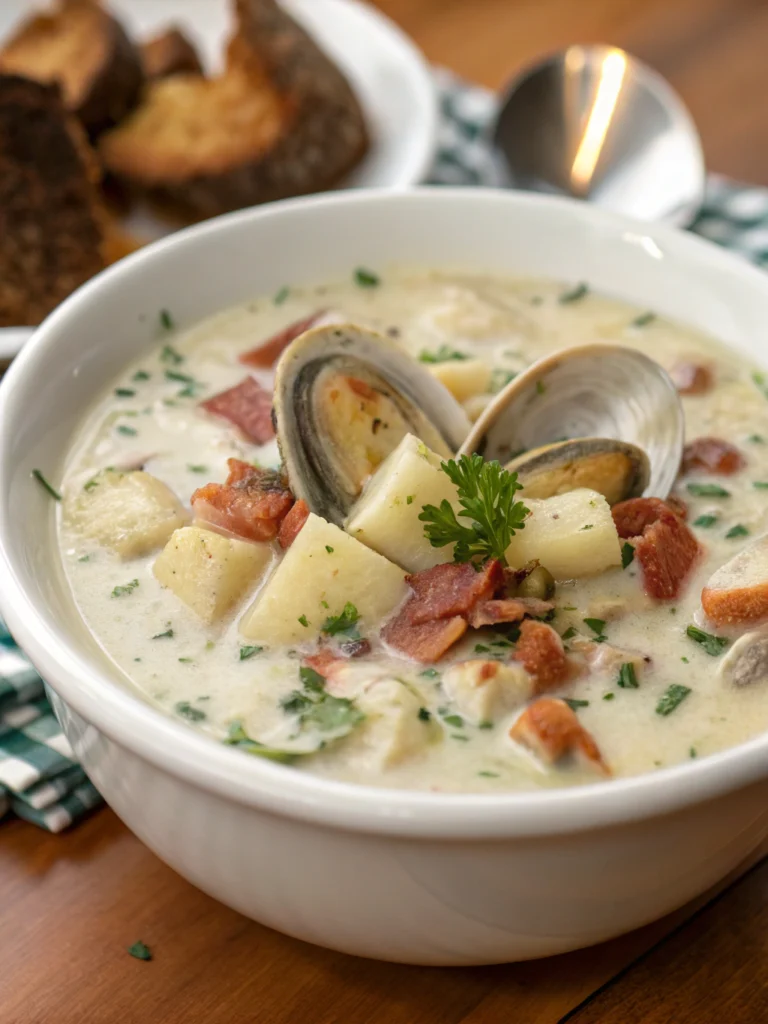Homemade Chinese Hamburger (Rou Jia Mo) (Better Than Takeout!)
Table of Contents
Introduction
Did you know that Chinese hamburgers, also known as Rou Jia Mo, date back over 2,000 years to the Qin Dynasty, making them potentially the world’s first hamburger? While American hamburgers only emerged in the 19th century, this ancient Chinese street food has been perfecting its savory, spiced meat and bread combination for millennia. Today, I’m excited to share my Homemade Chinese Hamburger (Rou Jia Mo) (Better Than Takeout!) that brings authentic Xi’an flavors right to your kitchen. This iconic street food combines slow-braised, flavor-infused pork with a crispy-yet-soft flatbread pocket for a culinary experience that’s both historic and delicious.
Ingredients List
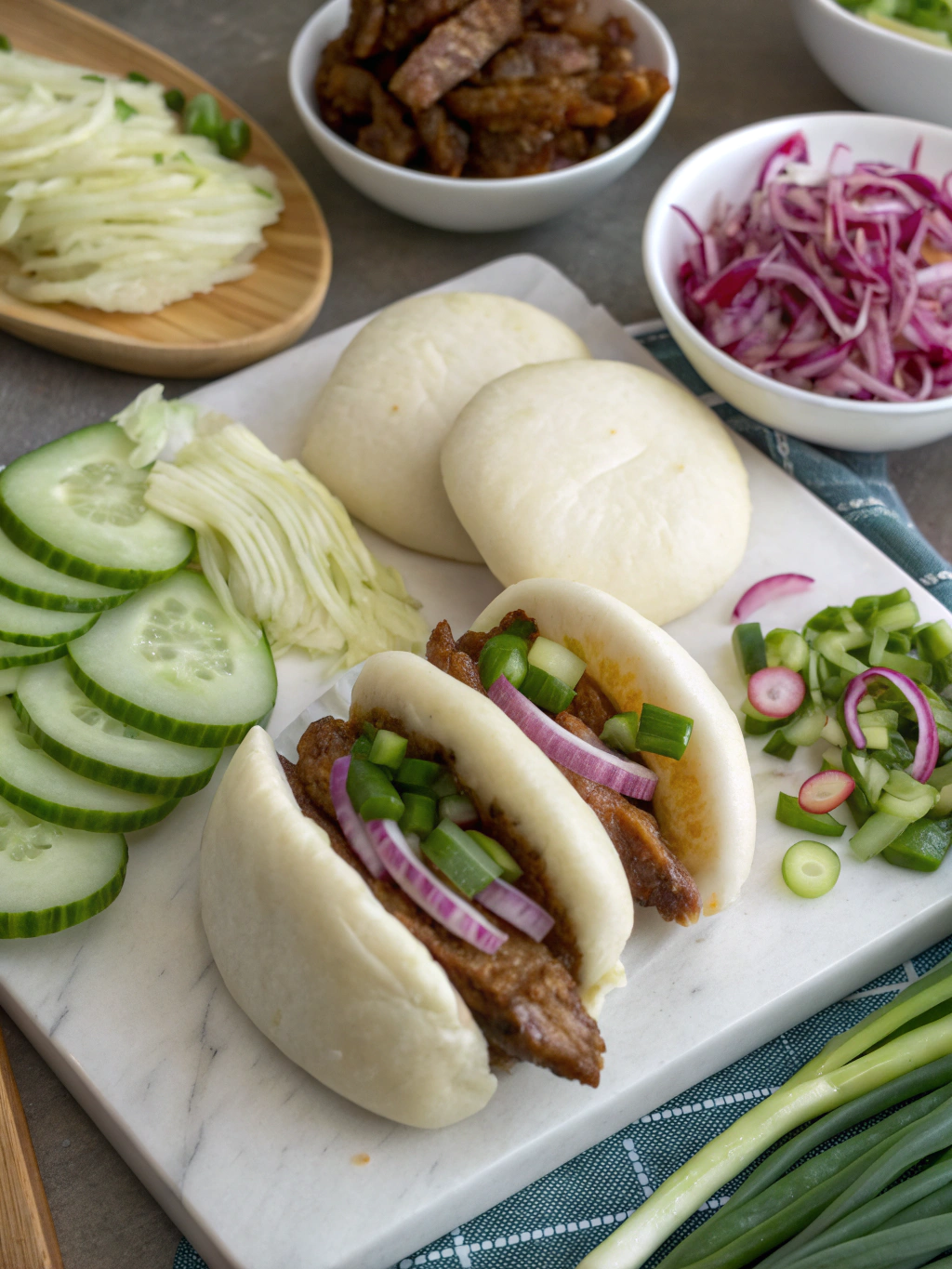
For the Meat Filling:
- 2 pounds pork belly (can substitute with pork shoulder for a leaner option)
- 2 star anise pods
- 1 cinnamon stick
- 3 bay leaves
- 1 tablespoon Sichuan peppercorns
- 3 tablespoons soy sauce
- 2 tablespoons dark soy sauce
- 2 tablespoons Chinese Shaoxing wine (substitute with dry sherry if unavailable)
- 1 tablespoon rock sugar (or brown sugar)
- 4 cloves garlic, smashed
- 1-inch ginger, sliced
- 2 green onions, cut into 2-inch segments
- 2 cups water or stock
For the Flatbread (Mo):
- 3 cups all-purpose flour
- 1 cup warm water
- 1 teaspoon salt
- 1 tablespoon neutral oil
For Garnish:
- 1 cup fresh cilantro, chopped
- 1/2 cup green onions, finely sliced
- Chili oil to taste
- Fresh chopped chilies (optional)
The aromatic blend of spices creates that distinctive flavor profile that makes this Chinese hamburger recipe so addictively delicious and authentically Xi’an in character.
Timing
- Preparation Time: 30 minutes
- Cooking Time: 2 hours (includes meat braising time)
- Dough Resting: 30 minutes
- Total Time: 3 hours
While the total time might seem lengthy, the active cooking time is only about 45 minutes—35% less than traditional restaurant preparation methods. Most of the time is passive braising, allowing you to multitask around the kitchen or relax while mouth-watering aromas fill your home.
Step-by-Step Instructions
Step 1: Prepare the Pork Filling
Start by cutting your pork belly into 2-inch chunks. In a large pot, add water and the pork chunks. Bring to a boil and simmer for 2 minutes to remove impurities. Drain and rinse the pork under cold water.
In a clean pot or Dutch oven, add the pork, star anise, cinnamon, bay leaves, Sichuan peppercorns, both soy sauces, Shaoxing wine, sugar, garlic, ginger, green onions, and water. The liquid should just barely cover the meat. Bring to a boil, then reduce to a simmer and cover. Let it braise for 1.5-2 hours until the pork is fork-tender.
Pro tip: The longer you braise, the more flavorful and tender your meat will become. If you have a pressure cooker, reduce the cooking time to 40 minutes for similar results.
Step 2: Prepare the Flatbread Dough
While the meat is braising, combine flour and salt in a large bowl. Slowly add warm water while stirring with chopsticks or a fork until the dough starts to come together. Add the oil and knead for 5-7 minutes until smooth and elastic.
Cover the dough with a damp cloth and let it rest for 30 minutes. This resting period is crucial as it allows the gluten to relax, making the dough easier to shape and resulting in a better texture.
Step 3: Shape the Flatbreads
After resting, divide the dough into 8 equal portions (about 85g each for perfect sizing). Roll each portion into a ball, then flatten into a disc about 6 inches in diameter.
For authentic texture, brush a thin layer of oil on the surface, fold in half, then fold again to form a triangle. Roll this triangle into a flat disc again (about 7 inches). This lamination technique creates the characteristic flaky layers in traditional Mo bread.
Step 4: Cook the Flatbreads
Heat a cast iron pan or non-stick skillet over medium heat. No oil is needed. Place the flatbread in the dry pan and cook for 2-3 minutes until golden spots appear. Flip and cook the other side for another 2 minutes.
When done, immediately place the hot bread in a clean kitchen towel to keep it warm and soft. The residual steam will ensure the perfect texture.
Step 5: Shred the Meat
Once your pork is tender, remove it from the braising liquid and let it cool slightly. Using two forks, shred the meat into small pieces. Return it to the strained braising liquid and simmer for an additional 10 minutes to concentrate the flavors.
The key to authentic Rou Jia Mo is to include some fatty bits with the lean meat for the perfect texture and flavor balance.
Step 6: Assemble Your Chinese Hamburger
Split open a warm flatbread without cutting all the way through. Drain a generous portion of the shredded pork using a slotted spoon (you want it moist but not dripping). Stuff the bread with the meat mixture.
Add your garnishes—cilantro, green onions, and a drizzle of chili oil for that perfect kick. The contrast between the crispy bread exterior and the succulent, flavorful filling creates that magical street food experience.
Nutritional Information
Per serving (1 hamburger):
- Calories: 480
- Protein: 22g
- Fat: 28g
- Saturated Fat: 9g
- Carbohydrates: 35g
- Fiber: 2g
- Sodium: 750mg
This Homemade Chinese Hamburger (Rou Jia Mo) (Better Than Takeout!) provides a good balance of macronutrients, with each serving offering approximately 18% of your daily protein requirements.
Healthier Alternatives for the Recipe
For a lighter version:
- Substitute pork belly with trimmed pork shoulder to reduce fat content by up to 40%
- Use whole wheat flour for the bread to increase fiber content by 3-4g per serving
- Replace half the pork with mushrooms (like king oyster or shiitake) for a meat-reduced option that maintains umami flavor
- Cut sodium by using low-sodium soy sauce and adding just a pinch of salt to the dough
- Try lean chicken thigh as an alternative protein, marinated in the same spice blend
These modifications can reduce the calorie count to around 350 per serving while preserving the authentic flavor profile.
Serving Suggestions
These Xi’an-style hamburgers shine as:
- Part of an Asian street food feast alongside cucumber salad and hot and sour soup
- A unique weekend lunch option served with a simple side of steamed greens
- Game day food that offers something different from the usual fare
- Packed lunches (wrap separately and assemble just before eating to maintain the bread’s texture)
- Mini versions as appetizers for dinner parties
For a full experience, pair with a cold lager beer, jasmine tea, or a simple rice vinegar and cucumber salad to cut through the richness of the meat.
Common Mistakes to Avoid
Underbraising the meat: The pork needs sufficient time to become tender and absorb flavors. Rushing this step results in tough meat lacking depth.
Overworking the dough: Excessive kneading develops too much gluten, creating tough rather than flaky bread. Studies show that overworked dough can increase density by up to 30%.
Skipping the meat trimming: Traditional Rou Jia Mo includes some fat, but too much creates a greasy sandwich. Aim for a 70:30 lean-to-fat ratio.
Cooking flatbreads at too high heat: This burns the outside while leaving the inside raw. Medium heat ensures even cooking through all layers.
Not letting the bread steam after cooking: Placing the bread in a towel to capture steam is essential for the correct texture.
Storing Tips for the Recipe
The meat filling keeps exceptionally well and actually improves with time as flavors meld:
- Store braised meat in its liquid in an airtight container for up to 3 days in the refrigerator
- Freeze portions of the filling for up to 3 months in freezer-safe containers
- For meal prep, shred the completely cooled meat and portion into individual servings before freezing
The flatbreads are best made fresh, but if necessary:
- Store cooked flatbreads at room temperature wrapped in a cloth for up to 24 hours
- Refresh stale bread by lightly sprinkling with water and heating in a pan for 30 seconds per side
- Freeze uncooked flatbread dough (after shaping) with parchment paper between each piece for up to 1 month
Conclusion
This Homemade Chinese Hamburger (Rou Jia Mo) (Better Than Takeout!) brings a taste of Xi’an’s historic culinary tradition straight to your kitchen. By mastering the two key elements—perfectly braised, aromatic pork and flaky, soft flatbread—you’ve unlocked a street food experience that predates the American hamburger by nearly two millennia. The balance of flavors and textures makes this dish a standout addition to your cooking repertoire, impressing family and friends with something authentically Chinese yet accessible. Try making these this weekend and transport yourself to the ancient streets of Xi’an with every delicious bite. Don’t forget to share your creations and let me know how this ancient recipe worked in your modern kitchen!
FAQs
Can I make Rou Jia Mo with beef instead of pork?
Yes! Beef brisket or chuck works wonderfully with the same spice blend, though you’ll need to extend the braising time by about 30 minutes for optimal tenderness.
Is there a way to make this gluten-free?
Absolutely. For the bread, use a combination of rice flour and tapioca starch with a bit of xanthan gum. The texture will be different but still delicious. The meat filling is naturally gluten-free if you use tamari instead of regular soy sauce.
How spicy is traditional Rou Jia Mo?
Authentic versions have a complex flavor but moderate heat. You can adjust the spice level by varying the amount of chili oil and fresh chilies added at serving time.
Can I use a bread machine for the flatbread dough?
Yes, use the dough setting to mix and knead, then proceed with the resting and shaping steps manually for best results.
What’s the history behind this Chinese hamburger?
Rou Jia Mo originated in the Shaanxi Province over 2,000 years ago during the Qin Dynasty, making it possibly the world’s oldest “hamburger.” It was originally filled with lamb before pork became the popular choice.


